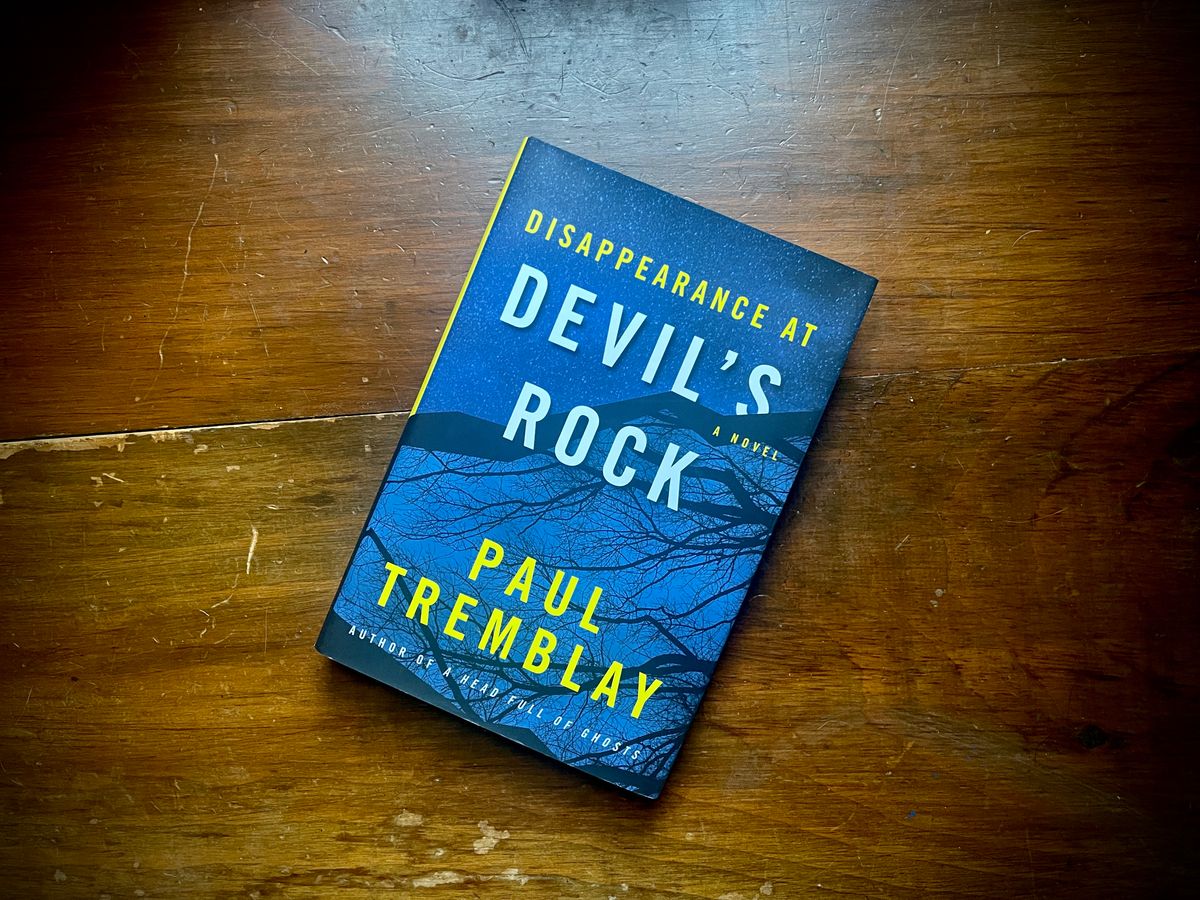In Disappearance at Devil’s Rock, it’s growing up that is truly terrifying
Tremblay's latest horror is a gripping meditation on what we leave behind

In Paul Tremblay’s latest novel, Disappearance at Devil’s Rock, a 13-year-old named Tommy Sanderson goes missing. His vanishing pulls his family into a downward spiral of grief and despair, even as the police begin to piece together what happened.
Tremblay’s last novel, A Head Full of Ghosts, won the 2015 Bram Stoker Award, applying a light touch to a harrowing horror tale that leaves much to interpretation: was the demonic possession at its center real, or was it a simple case of evil human nature? Disappearance at Devil’s Rock, which follows the aftermath of the titular event, favors a similar ambiguity. According to Tommy’s friends, a whole group was playing in the woods near Split Rock when Tommy suddenly ran off and never returned, kicking off a major manhunt.
As the search progresses, Tommy’s mother and sister, Elizabeth and Kate, cope with the potential loss of a son and brother, even as stranger things begin to happen. Elizabeth thinks that she sees Tommy outside her window, but when she investigates, nobody is there. Pages from Tommy’s diary appear in the middle of the living room. Terrible truths are revealed about Tommy, and about the stranger he’d recently begun hanging out with.
The horrific elements are layered finely into the narrative—this is one of those books that could easily go either way, shifting with the shadows from supernatural horror to just another case of a terrible incident perpetrated by a sick individual. The thrill is in the chase, and the uncertainty that nags at you even as the answers slip tantalizingly into focus and the low-level feeling of dread rises and rises as you learn more about what Tommy was up to with his strange group of friends.
Earlier this year, I interviewed Tremblay, who noted that ambiguity is an effective instrument in the horror writer’s toolkit, because questions are so often scarier than definitive answers; the unexplained noises in the dark that chill the blood more than the sound of a gunshot.
This holds true in Disappearance at Devil’s Rock, and the book will strike parents particularly hard. When you have a child, you suddenly develop a constant background awareness that something terrible could happen to your child at any time, as quickly as turning your back in the supermarket. What makes this novel so horrifying is not the is-it-or-isn’t-it supernatural question, as much as the fact that, even divorced from the fantastical, it’s just too damn plausible. Tremblay ably recreates the modern details of teenage life, from texting, to Minecraft, to Snapchat, alongside the more uncomfortable aspects of adolescence, and all the trouble it brings.
At its core, the book is about the loss of innocence that all families undergo: children lose their sense of wonder at the world and grow to become their own flawed individuals, harboring their own secrets and desires. In each of his recent novels, Tremblay seems to be playing with the idea of the horror inherent in the transition to adulthood, children leaving the safety of home and making their way into the big, scary world, trying to hold on to their flawed, comfortable family lives even as they yearn to escape into an unknown future.
I was left breathless by the culmination of this story, which is not one that relies on a sudden twist ending. Its truths are more gradual than a sudden reveal, and somehow, for that, all the more disturbing. It’s a novel that, like its predecessor, will visit you at night for days, and weeks, and years to come.